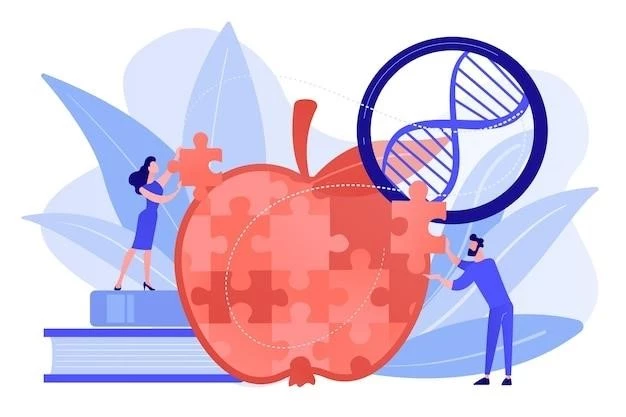Disease ‒ Dysfibrinogenemia, Familial
Welcome to the comprehensive guide on Dysfibrinogenemia, Familial. This article will delve into the rare clotting disorder, highlighting symptoms, diagnosis, treatment options, genetic mutations, hereditary factors, complications, and recent research findings. Stay tuned for invaluable insights!
Introduction
Welcome to this in-depth exploration of Dysfibrinogenemia, a rare genetic clotting disorder that affects the blood’s ability to form clots. In familial Dysfibrinogenemia, the abnormality is inherited within families, making it crucial to understand its genetic components. By uncovering the symptoms, diagnosis methods, and treatment options, individuals can better navigate this hereditary condition. Join us as we delve into the complexities of this disorder and discover the latest advancements in research and genetic mutations associated with Dysfibrinogenemia.
Understanding Dysfibrinogenemia
To comprehend Dysfibrinogenemia, it is essential to grasp its impact on blood clotting. This rare disorder arises from mutations in the fibrinogen gene, leading to dysfunctional fibrinogen production. As a result, individuals with Dysfibrinogenemia may experience abnormal bleeding or clotting tendencies. Understanding the intricate workings of fibrinogen and how genetic mutations disrupt its function is key to managing this condition effectively. Dive into the complexities of Dysfibrinogenemia to gain a profound insight into this inherited clotting disorder.
Familial Dysfibrinogenemia
Familial Dysfibrinogenemia refers to the hereditary nature of this rare disorder, where genetic mutations impacting fibrinogen are passed down through generations within a family. Understanding the familial aspect of Dysfibrinogenemia is crucial for recognizing potential risk factors and implementing appropriate screening measures for at-risk relatives. By delving into the familial inheritance patterns and genetic predisposition associated with this condition, individuals can make informed decisions regarding their health and genetic testing options. Explore the familial dynamics of Dysfibrinogenemia to navigate its complexities within family structures.
Symptoms of Dysfibrinogenemia
Recognizing the symptoms of Dysfibrinogenemia is crucial for early detection and management of this clotting disorder. Common symptoms may include excessive bleeding following injury or surgery, nosebleeds, easy bruising, and heavy menstrual periods in females. Additionally, individuals with Dysfibrinogenemia may be prone to developing abnormal blood clots, leading to complications like deep vein thrombosis. Understanding these symptoms can aid in prompt diagnosis and the implementation of appropriate treatment strategies to mitigate the impact of this inherited condition. Familiarize yourself with the diverse symptoms of Dysfibrinogenemia to take proactive steps towards better health outcomes.
Diagnosis of Familial Dysfibrinogenemia
Diagnosing Familial Dysfibrinogenemia involves a comprehensive evaluation of clinical symptoms, family history, and specialized laboratory tests. Healthcare providers may conduct coagulation studies to assess the blood’s clotting ability, molecular genetic testing to identify specific fibrinogen gene mutations, and imaging tests to detect any clotting abnormalities. It is essential to consult with a hematologist or genetic counselor for a proper diagnosis and to discuss genetic counseling options for family members. Understanding the diagnostic process for Familial Dysfibrinogenemia can help individuals navigate the complexities of this inherited clotting disorder and make informed decisions about their healthcare.
Genetic Mutations in Dysfibrinogenemia
Genetic mutations play a significant role in Dysfibrinogenemia, contributing to the abnormal production of fibrinogen and leading to the dysfunctional clotting process. Mutations in the fibrinogen gene can alter the structure and function of fibrinogen, impacting its ability to form stable blood clots. Understanding the specific genetic mutations associated with Dysfibrinogenemia is crucial for targeted treatment strategies and genetic counseling. By delving into the intricate genetic basis of this inherited clotting disorder, individuals can gain valuable insights into their condition and make informed decisions about managing their health.
Treatment Options
When it comes to treating Dysfibrinogenemia, a personalized approach is key to managing this rare clotting disorder effectively. Treatment options may include clotting factor replacements, antifibrinolytic medications to reduce bleeding, and platelet transfusions for severe bleeding episodes. Additionally, genetic counseling and regular monitoring by a hematologist are essential components of a comprehensive treatment plan. By exploring the diverse treatment modalities available for Dysfibrinogenemia and working closely with healthcare providers, individuals can proactively address their unique medical needs and optimize their quality of life.
Hereditary Factors
Hereditary factors play a critical role in Dysfibrinogenemia, with genetic mutations being passed down from one generation to the next within families. Understanding the hereditary nature of this disorder is essential for recognizing familial patterns, assessing genetic risks, and implementing preventive measures. By exploring the hereditary factors associated with Dysfibrinogenemia, individuals can gain insights into their genetic predisposition, undergo appropriate genetic testing, and make informed decisions about their health and potential risks for developing this rare inherited clotting disorder. Delve into the intricate hereditary aspects of Dysfibrinogenemia to empower yourself with knowledge on managing this condition within a familial context.
Complications⁚ Bleeding and Thrombosis
Complications arising from Dysfibrinogenemia often manifest as a delicate balance between bleeding and thrombosis due to the abnormalities in blood clot formation. Excessive bleeding following minor injuries or spontaneous bleeding episodes can occur, while paradoxically, individuals may also be at risk of developing abnormal blood clots. Recognizing and managing these complications are vital to minimizing health risks associated with Dysfibrinogenemia. By understanding the potential complications of both bleeding and thrombosis in this inherited clotting disorder, individuals can work closely with healthcare providers to implement preventive measures and tailored treatment strategies to maintain optimal clotting function and overall well-being.
Research and Advances
Ongoing research into Dysfibrinogenemia has led to significant advances in understanding the genetic underpinnings, diagnostic techniques, and treatment modalities for this rare clotting disorder. Scientists and healthcare experts continue to explore novel therapies, genetic testing advancements, and personalized approaches to managing Dysfibrinogenemia effectively. Staying informed about the latest research findings and breakthroughs in the field can empower individuals with valuable knowledge to make informed decisions about their healthcare. By keeping abreast of the latest research and advances in Dysfibrinogenemia, individuals can collaborate with healthcare professionals to access cutting-edge treatments and improve their quality of life.
Chromosomal Abnormalities in Dysfibrinogenemia
Chromosomal abnormalities associated with Dysfibrinogenemia play a crucial role in the genetic inheritance and manifestation of this rare clotting disorder. Specific alterations on the chromosome that carries the fibrinogen gene can lead to Dysfibrinogenemia within families. Understanding these chromosomal abnormalities is essential for identifying potential genetic risks, predicting disease outcomes, and guiding genetic counseling efforts. By exploring the intricate connection between chromosomal abnormalities and Dysfibrinogenemia, individuals can gain insights into the genetic basis of this inherited condition, enabling them to make informed decisions about genetic testing and family planning.

